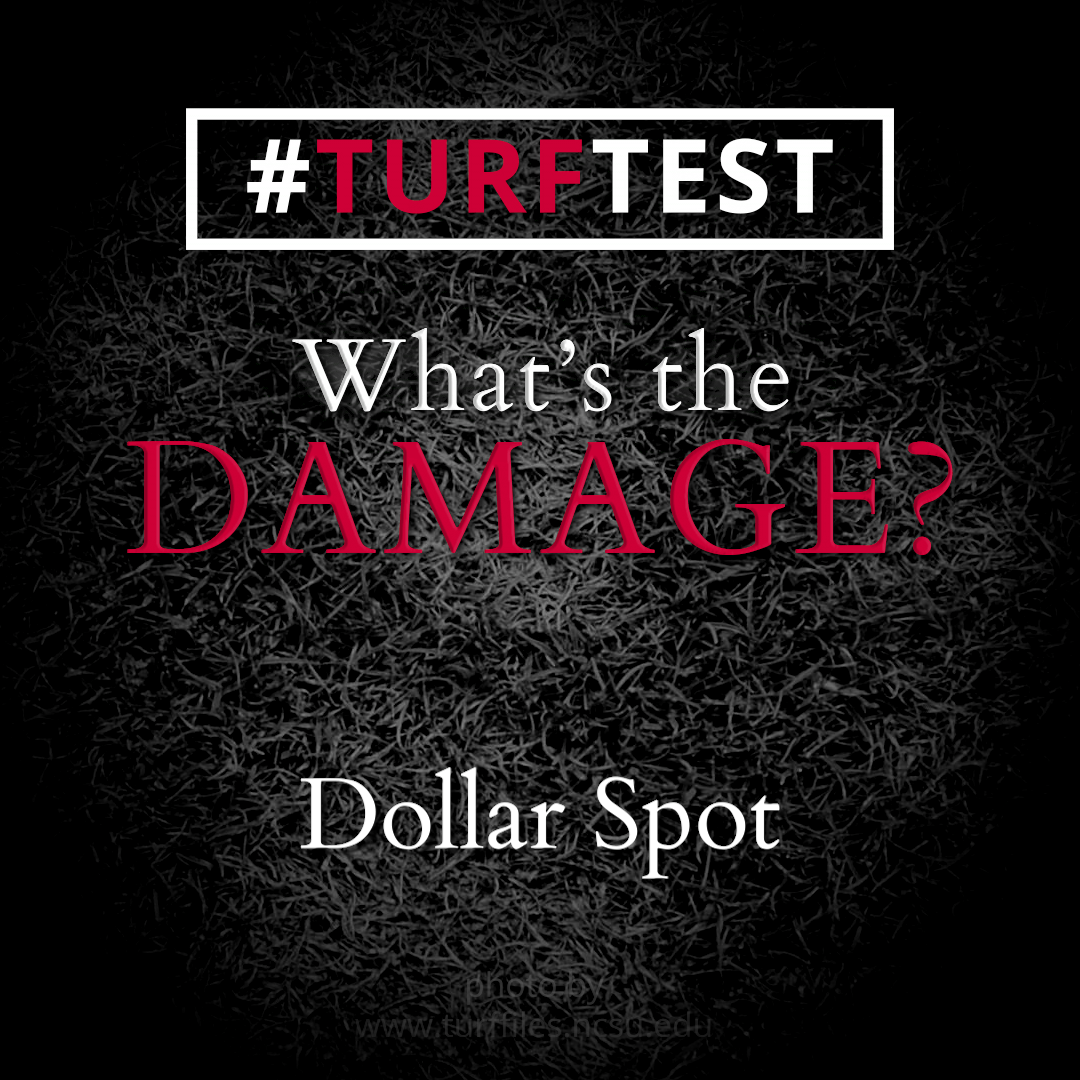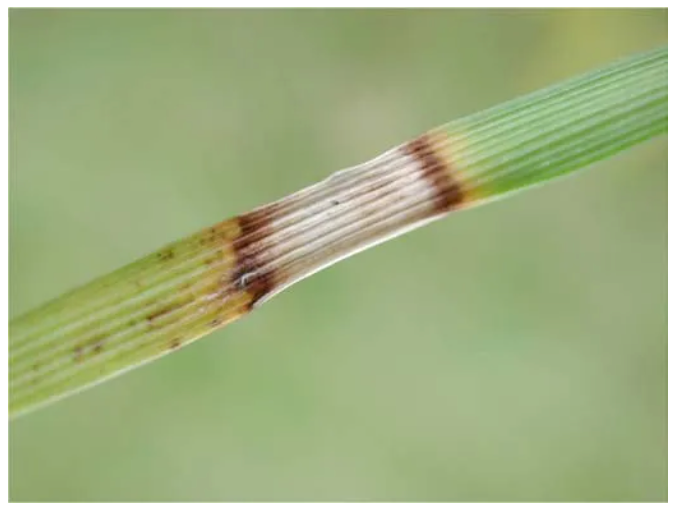What's the Damage? Dollar Spot

DESCRIPTION
Dollar Spot is caused by the fungus sclerotinia homoeocarpa, which typically thrives in temperatures between 59˚- 85˚ Fahrenheit during long periods of wetness. It affects all species of warm- and cool-season turfgrasses. The turf disease gets its name from the silver dollar-sized, tan colored spots it typically leaves on a golf course’s putting greens. This persistent disease has the potential to be active from mid-May through October, optimal temperatures varying among biotypes of the fungus.
HOW TO IDENTIFY
This disease is characterized by sunken and round, circular patches that measure up to 2 inches on putting greens mowed under ½ inch. However, at mowing heights above ½ inch, Dollar Spot may expand up to above 6 inches. The first symptoms of Dollar Spot appear as small yellow spots on individual grass blades. This spot then expands to a straw-like yellow or tan band with dark-red or dark-brown borders, sometimes resembling an hourglass shape. The entire blade soon becomes bleached, and the infected areas enlarge. If left untreated, the spots may merge and form irregular shaped areas that are much larger than the typical 2 inches.

THREAT
The roots and lateral stems are not directly harmed by the fungus. However, the roots of affected turfgrass can be damaged from the toxins created by the mycelium that the fungus can produce. These toxins affect the uptake of water and
nutrients, which causes the roots to enlarge, halt growth, and turn dark brown. While the grass can shed infected roots, the nutrients they contained are lost as well. As a result of those toxins still present, any replacement roots will likely also be affected.
- NOTE: Dollar Spot patches are more prevalent in areas where air circulation and soil drainage are inadequate. If left untreated, the patches will merge and continue to grow and damage/kill turf.

HOW TO MANAGE
The disease may occur even if you have practiced proper turf management, but it is usually the most severe/prevalent when turfgrass is deficient in nitrogen . Using adequate levels of nitrogen in your turf fertilizer program, especially during the spring and early summer will help discourage disease growth.
Applying biostimulants like
humic, seaweed extract and beneficial bacteria’s can be effective in preventing Dollar Spot since they have proven to improve a plants’ own defensive system to many stresses, including disease. Biostimulants trigger chemical messengers, plant hormones that tell plants when stressful environmental conditions exist and to prepare the plant accordingly. Research shows that materials like humic substances will stimulate the production of antioxidants and enhance photosynthetic activity in plants. This results in turfgrass’s improved tolerance of abiotic and biotic stresses like disease infection.
Cultural management is usually the first choice in managing Dollar Spot, but in some instances, fungicide can also be an effective treatment. Unfortunately, this disease has a resistance to some fungicides (benzimidazole and DMI fungicides). Be sure to choose a fungicide labeled for dollar spot treatment. Lawn diseases will usually require multiple applications of fungicide and timing of those applications must be precise for maximum efficacy. For best results, apply at first appearance of Dollar Spot. Due to how it flourishes in humidity and leaf wetness, flexible irrigation practices should be considered. Turf irrigation should be based on the moisture status of the soil, as opposed to scheduling. If watering is required, watering should take place around 6AM to keep leaf wetness periods short.
Proper
mowing practices should be adopted by mowing grass and removing subsequent thatch at regular intervals. This should allow more airflow and sunlight for turfgrass to discourage prolonged wetness. Golf course putting greens should be
aerated routinely along with topdressing with sand to help reduce buildup of
thatch. Washing equipment after mows and limiting foot traffic through infected areas will help manage the spread of the disease.
For professional fertilizers, humic and AMP-XC™ enriched products available, please visit TurfCare’s online Product Catalog.
For green industry professionals or others interested in ordering Turfcare products, please contact our Customer Service to find a distributor near you.
References:
https://www.syngentacropprotection.com/assets/assetlibrary/syngenta_diseaseid_guide.pdf
https://ag.umass.edu/turf/fact-sheets/dollar-spot
https://www.lawn-care-academy.com/lawn-diseases.html
https://ohioline.osu.edu/factsheet/HYG-3075https://extension2.missouri.edu/ipm1029?p=8
https://www.turffiles.ncsu.edu/diseases-in-turf/dollar-spot-in-turf/
http://www2.ca.uky.edu/agcomm/pubs/ppa/ppa1/ppa1.pdf
https://ugaurbanag.com/methods-to-maximize-efficacy-of-turfgrass-fungicides/
https://extension.msstate.edu/sites/default/files/publications/publications/p2455.pdf
Photos:
https://ohioline.osu.edu/factsheet/HYG-3075
The TURFReport Highlights:
Additional Articles and Insights
















